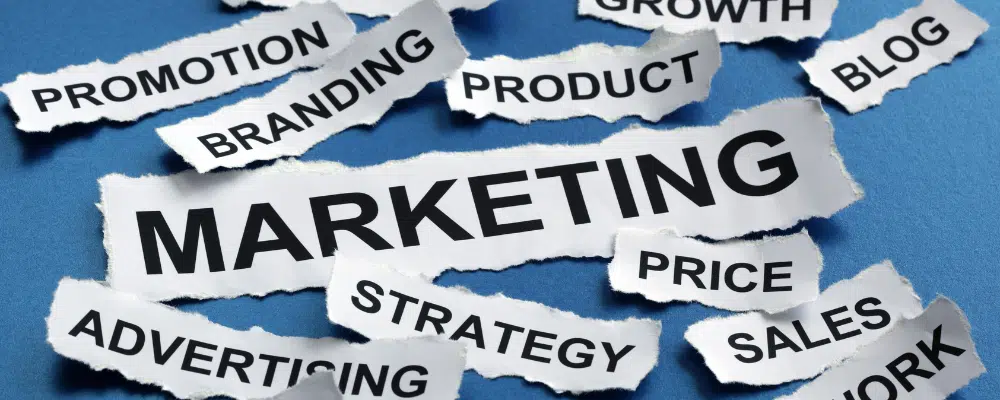Water damage restoration industry is essential in mitigating the damages caused by water intrusion, floods, or other water-related disasters. It involves the process of repairing and restoring properties and belongings affected by water damage. The industry is critical as it helps to prevent further damage and ensure that affected homes or businesses are habitable and safe.
Converting water damage leads into paying customers can be challenging for businesses in the industry. The process requires businesses to establish trust and credibility, offer exceptional customer service, leverage social proof, use effective call-to-actions, and nurture leads through email marketing. To address these challenges, this post will outline five effective strategies that can help water damage restoration businesses convert leads into paying customers. Implementing these strategies can help water damage restoration businesses increase their chances of converting potential customers into paying clients, which can ultimately lead to the growth of their customer base and overall success of their business.
1. Establishing Trust and Credibility
In the water damage restoration industry, building trust and credibility with prospective clients is paramount. This process lays the foundation for a positive reputation and fosters a preference for the business’s services over those of competitors. The significance of establishing trust cannot be overstated in this line of work. When a client experiences water damage in their home or business, they require quick and efficient solutions from professionals they can rely on. Trust is vital in such situations, as clients need to feel confident that the restoration process will be handled competently and professionally.
Building credibility instills a sense of confidence in clients that the business is well-equipped to handle their specific needs. Demonstrating competence, knowledge, and reliability enables businesses to earn the trust of their clients, fostering a positive reputation and enhancing their overall standing in the industry.
To establish trust and credibility, water damage restoration businesses can follow these tips:
Be Transparent
It is essential to be transparent with potential customers about the restoration process, costs, and what to expect during the project. This helps to build trust and avoid any surprises that may lead to negative reviews or complaints. By providing clear and detailed information upfront, businesses can avoid any surprises that may result in negative reviews or complaints. Transparency also demonstrates a commitment to providing high-quality services while ensuring that clients have a complete understanding of the restoration process.
Transparency can not only help build trust but also set businesses apart from their competitors. When a business is open and honest about their processes and costs, it can instill a sense of confidence and reliability in clients, making them more likely to choose that business over others. By prioritizing transparency, businesses can enjoy increased customer satisfaction, loyalty, and positive word-of-mouth recommendations.
Provide References and Case Studies
Providing references from past clients or showcasing case studies can help potential customers see the business’s track record of success. This can also help to showcase the business’s expertise and experience in the industry. By highlighting a track record of success, businesses can instill confidence in potential clients and demonstrate their ability to deliver quality results. References and case studies provide tangible evidence of the business’s capabilities, which can be especially valuable for those who are unfamiliar with the restoration process.
Providing references and case studies can help businesses stand out in a crowded industry. Potential customers may be more likely to choose a business with a proven track record of success over one that does not have such evidence readily available.
Showcase Certifications and Affiliations
Certifications and affiliations with reputable organizations in the industry can also help to establish credibility. These certifications and affiliations demonstrate the business’s commitment to maintaining industry standards and best practices.
Certifications, such as those offered by the Institute of Inspection, Cleaning and Restoration Certification (IICRC), demonstrate a business’s expertise and competence in the industry. These certifications require rigorous training and education, ensuring that businesses are equipped with the necessary knowledge and skills to deliver quality restoration services.
Affiliations with reputable organizations, such as the Restoration Industry Association (RIA), can also help to establish credibility. These organizations promote industry standards and best practices, and affiliating with them shows a business’s commitment to upholding these standards.
Certifications and affiliations can help businesses stand out in a competitive industry. Clients may be more likely to choose a business with these credentials, as they provide reassurance that the business is knowledgeable and committed to delivering high-quality services.
Offer Guarantees
In the water damage restoration industry, providing guarantees for the quality of work can be a powerful way to establish trust with potential customers. These guarantees serve as a promise to deliver high-quality services and instill confidence in clients that the business stands behind its work.
Guarantees can take many forms, including guarantees on the restoration work itself, customer satisfaction, or timelines for completion. A guarantee on the restoration work may include a promise to fix any issues that arise within a specified period of time after completion. This demonstrates the business’s commitment to delivering quality results and ensuring that clients are satisfied with the work.
A customer satisfaction guarantee may include a promise to address any concerns or complaints promptly and to work with the client until they are completely satisfied with the results. This shows that the business prioritizes customer service and values client feedback. A guarantee on timelines for completion can provide reassurance to clients that the project will be completed within a specified timeframe. This can be especially important in emergency situations, where clients need timely solutions to minimize damage and disruption.
Implementing these strategies can help water damage restoration businesses build trust and credibility with potential customers, which can result in greater customer loyalty, referrals, and ultimately, business growth.
2. Offering Exceptional Customer Service
Offering exceptional customer service is an important component of success for businesses in the water damage restoration industry. Not only does it create a positive customer experience, but it can also lead to more paying customers through positive word-of-mouth referrals and online reviews.
Providing exceptional customer service starts with being responsive and transparent with clients. Responding quickly to inquiries and providing clear and detailed information about the restoration process can help to establish trust and confidence in the business. Clients are more likely to choose a business that is responsive and transparent, as this demonstrates a commitment to providing high-quality services.
Along with responsiveness and transparency, post-service follow-ups are crucial for businesses. By checking in with customers after the job is completed, businesses can promptly address any concerns or issues that may have arisen and ensure customer satisfaction. Following up also offers a chance to request feedback and encourage customers to share their positive experiences through reviews, which can serve as a potent marketing tool.
To provide exceptional customer service, businesses should also prioritize communication and empathy. This means being available to answer questions and concerns promptly and showing understanding and compassion for the impact that water damage can have on a client’s life. Going above and beyond to provide solutions and support can create a positive customer experience and foster long-term loyalty.
3. Demonstrating Credibility with Social Evidence
In the water damage restoration industry, demonstrating credibility is critical to winning over potential customers. One way to achieve this is by leveraging the power of social proof. Social proof, which refers to the influence that the opinions and actions of others can have on people, can be a highly effective way to build trust and credibility with potential customers. By showcasing positive customer reviews and testimonials, businesses can provide social evidence of their ability to deliver high-quality restoration services. This social evidence can help to differentiate businesses from their competitors, establish trust with potential customers, and ultimately lead to more conversions and business growth.
To showcase social proof, businesses can use positive customer reviews and testimonials to demonstrate the quality of their services. This can be done through online platforms such as Google My Business, Yelp, and Facebook, as well as on the business’s own website. By sharing customer feedback and experiences, businesses can provide social proof that their services are effective and trustworthy, which can help to convert leads into paying customers.
Another way to leverage social proof is by using social media platforms to showcase past work and interact with potential customers. By sharing before-and-after photos and videos of previous restoration projects, businesses can demonstrate their expertise and showcase the quality of their work. Engaging with potential customers through social media can also help to build relationships and establish trust, which can lead to more conversions.
To effectively use social media for social proof, businesses should prioritize authenticity and transparency. This means responding promptly and honestly to customer inquiries and feedback and being upfront about the restoration process and costs. Offering genuine and transparent communication can help businesses establish trust and credibility with potential customers, resulting in higher conversion rates and fostering long-term customer loyalty.
4. Using Effective Call-to-Actions
In order to increase conversions and motivate potential customers to take action, it is important to have effective call-to-actions (CTAs). Whether the goal is to request a quote, schedule a consultation, or make a purchase, a well-crafted CTA can make all the difference. To create compelling and effective CTAs, there are some tips to consider, which we will discuss below.
Be Clear and Specific About the Benefits
When creating a call-to-action (CTA), businesses should focus on being clear and specific about the benefits of their service. This can be achieved by highlighting the value that their service provides, such as fast response times, experienced technicians, and comprehensive restoration solutions. By emphasizing the benefits, potential customers are more likely to see the value in the service and feel a sense of urgency to take action.
Using persuasive language can also help drive conversions. For example, instead of simply stating “Contact us,” a more effective CTA might say “Get started today and experience our industry-leading restoration solutions.” By creating a sense of excitement and urgency around the benefits of the service, businesses can encourage potential customers to take action and ultimately drive conversions.
Make Them Visually Appealing and Easy to Find
Another important tip for creating effective CTAs is to make them visually appealing and easy to find. This means using contrasting colors, bold fonts, and strategically placing them on the website or landing page. The language used in the CTA should also be concise and action-oriented, such as “Get Your Free Quote Now” or “Schedule Your Consultation Today.”
Test and Optimize CTAs for Better Results
Testing and optimizing CTAs is also important for improving results. This can be done through A/B testing, where two versions of the same landing page or website are tested to see which performs better. By testing different variations of CTAs, businesses can identify what works best for their target audience and optimize their website accordingly.
The Importance of Effective CTAs
Effective CTAs are critical for converting leads into paying customers. By using clear and specific language that highlights the benefits of the service, creating visually appealing and easy-to-find CTAs, and testing and optimizing them for better results, businesses can improve their conversion rates and ultimately drive growth and success.
5. Nurturing Leads with Email Marketing
Email marketing can be a powerful tool for nurturing leads and converting them into paying customers. By sending targeted and personalized emails, businesses can stay top of mind with potential customers and provide them with valuable information that helps move them along in the buying process.
A lead nurturing email series is a sequence of automated emails designed to guide the potential customer through the buying process. This series can be personalized to the customer’s needs and interests, providing valuable information and answering any questions they may have. Segmenting your email list allows you to send targeted messages to specific groups of leads. By tailoring your message to their specific needs and interests, you can increase the chances of converting them into paying customers.
Offering incentives such as discounts or free consultations can be a powerful way to convert leads into customers. These incentives should be targeted towards the specific needs and interests of the leads. Using engaging content in your emails, such as videos, infographics, and interactive content, can keep your leads interested and engaged. This can help build trust and establish your business as an authority in the industry.
Using metrics such as open rates, click-through rates, and conversion rates can help you track the success of your email marketing campaign. By analyzing this data, you can make data-driven decisions and optimize your email marketing strategy for better results.
Conclusion
There are several effective strategies for converting water damage leads into paying customers. By following these strategies, businesses in the water damage restoration industry can increase their conversion rates and drive growth and success. We encourage you to implement these strategies in your business to improve your conversion rates and attract more paying customers.
If you are in need of water damage restoration services, please don’t hesitate to contact our business. We are committed to providing high-quality and comprehensive solutions to help you restore your property to its pre-damaged state.




